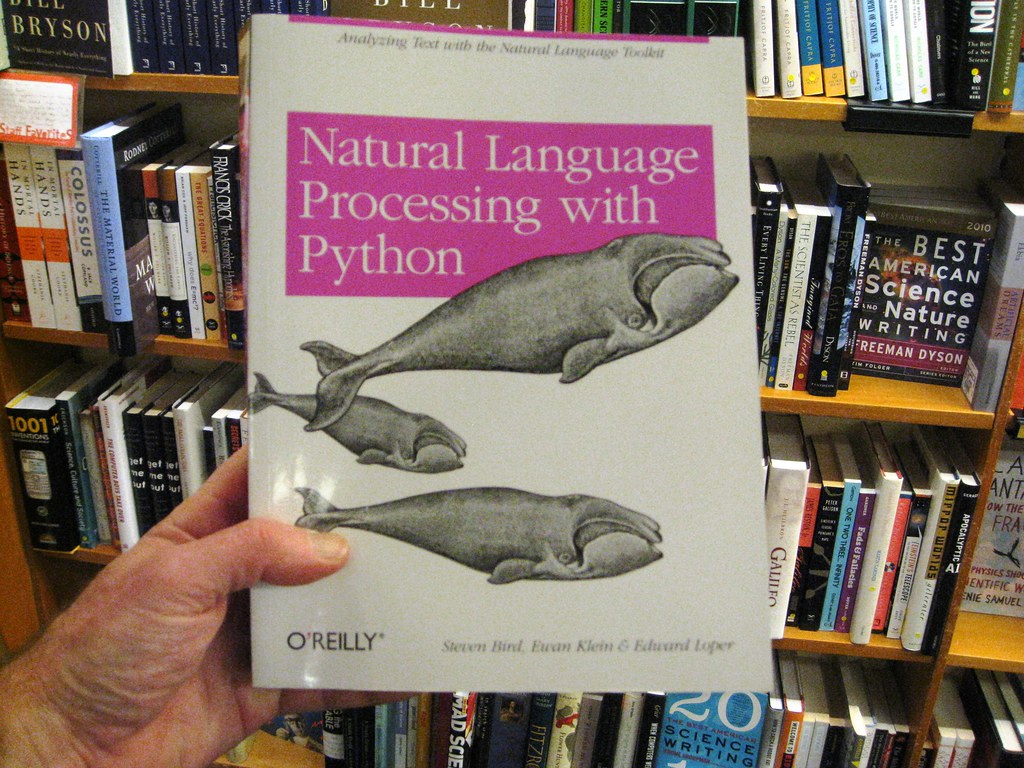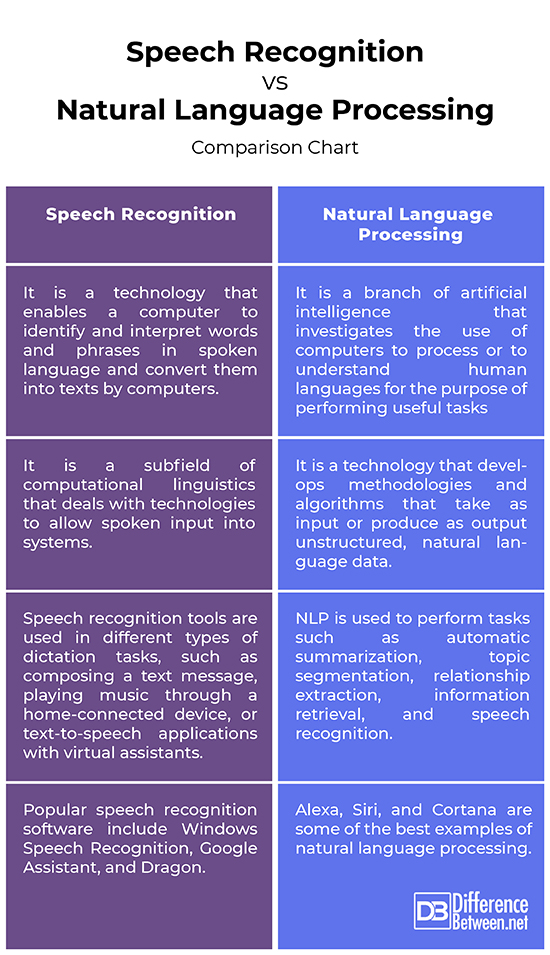Difference Between Speech Recognition and Natural Language Processing
In the past few years, advances in machine learning and computational linguistics have led to significant developments and improvements in how we interact with the world around us. One of the most significant of these advances is the field of voice recognition. However, speech recognition is not entirely a new concept; in fact, it has been around for as long as there have been computers. The concept was first introduced to the public as science fiction, on movies like 2001: Space Odyssey. Speech programs generally involve either computer generated speech synthesis, or human speech with computer voice response or both. Human communication is at the core of developments in speech recognition and the complexities of language make computational approaches increasingly difficult. This is where deep learning techniques such as natural language processing (NLP) comes to the picture. NLP opens new fronts to improve human-computer interaction. In fact, NLP has been a bonus technology for speech recognition processes, making it less time consuming and easier.
What is Speech Recognition?
Speech recognition is a technology that enables a computer to identify and interpret words and phrases in spoken language and convert them into texts by computers. It is a subfield of computational linguistics that deals with technologies to allow spoken input into systems. It allows user to control their computers with their voice. Speech recognition is quickly becoming a mainstay in human-computer interaction. Today, speech recognition tools are used in different types of dictation tasks, such as composing a text message, playing music through a home-connected device, or text-to-speech applications with virtual assistants. It has become ubiquitous today as a great way to interact with technology, significantly bridging the gap between human and computer interaction and making it more natural. NLP is one such technology that simplifies speech recognition processes using natural language.
What is Natural Language Processing?
Natural Language Processing (NLP) is a branch of computer science that deals with human communication. NLP is a branch of artificial intelligence that investigates the use of computers to process or to understand human languages for the purpose of performing useful tasks. It encompasses approaches to help machines understand, interpret, and generate human language. It simply deals with the interaction between humans and computers using a natural language such as English. It combines computational linguistics, computing science, cognitive science and artificial intelligence to perform tasks such as translation, automatic summarization, topic segmentation, relationship extraction, information retrieval, machine translation, and speech recognition. The idea is to develop novel practical applications to facilitate the interactions between computers and human languages.
Difference between Speech Recognition and Natural Language Processing
Definition
– Speech recognition is a technology that enables a machine or program to identify and understand words or phrases from spoken language and convert them into machine readable format. It is a subfield of computational linguistics that deals with technologies to allow spoken input into systems. Natural Language Processing (NLP), on the other hand, is a branch of artificial intelligence that investigates the use of computers to process or to understand human languages for the purpose of performing useful tasks. NLP is a technology used to simplify speech recognition processes to make them less time consuming.
Technology
– Voice recognition, also referred to as speech recognition, is a technology that offers great advantages for many types of human-machine communication. With speech recognition, computers can understand and interpret spoken words of phrases and convert them into text. It is used primarily for dictation, interface and security. NLP, on the other hand, is a technology that develops methodologies and algorithms that take as input or produce as output unstructured, natural language data. NLP and speech recognition are sometimes used in conjunction in applications such as voice assistants, ASR engines, and speech analytics tools.
Applications
– Speech recognition basically means talking to a computer and getting it to understand and interpret your spoken words. Speech recognition software use different algorithms to identify spoken languages and convert it into text. As a dictation device, voice recognition can be used to pick-up the words you say and type in on a computer. It is also used as an interface and control system for computers. The best example of natural language processing is machine translation, which automatically translates text or speech from one language to another. NLP is used to perform tasks such as automatic summarization, topic segmentation, relationship extraction, information retrieval, and speech recognition.
Speech Recognition vs. Natural Language Processing: Comparison Chart
Summary of Speech Recognition vs. Natural Language Processing
Speech recognition basically means talking to a computer and getting it to understand and interpret your spoken words. It identifies and interprets words and phrases in spoken language and converts them into texts by computers. Natural Language Processing simply deals with the interaction between humans and computers using a natural language such as English. NLP technology applies machine learning algorithms to text and speech. NLP and speech recognition are often used in conjunction in applications such as voice assistants, ASR engines, and speech analytics tools.
- Difference Between Caucus and Primary - June 18, 2024
- Difference Between PPO and POS - May 30, 2024
- Difference Between RFID and NFC - May 28, 2024
Search DifferenceBetween.net :
Leave a Response
References :
[0]Image credit: https://live.staticflickr.com/7168/6400787625_fd21185592_b.jpg
[1]Image credit: https://commons.wikimedia.org/wiki/File:Scheme_of_speech_recognition_system.png
[2]Goldberg, Yoav. Neural Network Methods in Natural Language Processing. San Rafael, California: Morgan & Claypool Publishers, 2017. Print
[3]Liu, John, et al. Deep Learning for NLP and Speech Recognition. Berlin, Germany: Springer, 2019. Print
[4]Holmes, Wendy. Speech Synthesis and Recognition. Boca Raton, Florida: CRC Press, 2001. Print



